Text
CREATIVE CULTURES & CONTEXTS 237230 ⋆ WEEK 8 ⋆ Ephemeral Performances
Our first guest speaker for today’s lesson was Massey Graduate and International Sales and Trade Marketing Lead of Able Odor - Eugie Boyd; who came to us with a healthy mixture of hindsight as to her academic experience at Massey, along with foresight as to the paths we could take our work towards in the future. Being at a bureaucratic position within a vegan-based perfume brand, Boyd found that one’s artistic flairs resurface sooner or later, no matter the job position. By extension of being artists, there will be a little bit of art in everything we do.
For our first-class exercise, each table was provided with a bottled scent, and tasked with creating a marketing framework and strategy for the product, along with a snazzy advertising exterior – all within 20 minutes. Our scent bounced between tones of pine and cheese, and from the inspirations of this scent alone, we got to planning out our advertising programme. As most of the group was occupied in the design side of things, I asked around as to our plans for a target audience, sale price, and slogan. The following is what I wrote for our presentation.
A relaxed space, rustic and green. Old quality meets new values. Take a step onto the balcony and breathe it all in. Delight in the unveiling - TREES n’ CHEESE (alternatively, Cedar and Cheddar)
In moderation, our perfume provides a scent akin to Walking through pine trees, with a joyful, homey feel. In greater whiffs, you get a gust of Smokey cheese.
Trees n Cheese exists as a Vegan ethical product – while progressive in form, the marketing caters to an older time-period; most of our target audience will be dead in 20 years. The marketing and brand selling strategy expresses a quality-over-quantity approach, thriving in the sustainability of it all: Selling Small and expensive at farmer’s markets, local festivals, and community carnivals. Sustainability is our prime directive.
The olfactory compositions of pine give it A little masculine feel, but the smokier notes of cheese lead it to an old-timey feel of domesticated wood-life – Akin to an older gentleman with a knitted sweater falling asleep on a rocking chair, on the balcony, in Colorado, on a warm Thursday morning.
Trees n’ Cheese – the scents of dusk for those at the dusk of their lives.
Following this olfactory exercise, our following guest speaker was CoCA Librarian Craig Cherrie. His lecture kicked off with a quote from Gillian Rose, in her 2001 text Visual Methodologies:
“Visual imagery is never innocent; it is always constructed through various practices, technologies and knowledges.” (Gillian)
Their ‘artifact’ of focus revolved around the idea of the ‘visual meme’ – the cultural gene in function as an activist practice, particularly in the context of indigenous communities; with the key question being: “How do they enliven connections to their intended audience? What do these memes reflect of current cultures and issues?”
As a class activity, we researched two sources on visual memes using Google’s basic search.
Searched “visual memes”
Yielded: Visual Memes and Viral Images: Analysis, Discourse, Politics (NTU)
Yielded: Memes as Visual Tools for Precise Message Conveying (Thov Reime)
We then looked for a third source, using a more detailed search:
Searched “visual memes activist OR activism” (Sources from 2015 onwards)
Yielded: Internet Memes as Protest Media in Populist Hungary (Gabriella Lukács)
Our search was then further specified with some more, related terminology.
Searched “visual memes activist OR activism indigenous OR maori”
Yielded: "Since Time Im-MEME-morial"!: Indigenous Meme Networks and Fan-Activism” (Jacqueline Land)
Developing on this, we added the search element “site:org” to filter out commercial sources.
Searched “visual memes activist OR activism indigenous OR maori site:org”
Yielded: Indigenous memes by Indigenous hands: How Internet memes become an important storytelling medium used by Indigenous peoples (Magdalen Wong)
Yielded: Indigenous Memes and the Invention of a People (Ryan Frazer)
Finalizing our Google search, we swapped out the “.org” part of the search query with a “.nz” to localize our sources.
Searched “visual memes activist OR activism indigenous OR maori site:nz”
Yielded: Māori Instagram: The Social Media Lifeworlds and Decolonising Practices of Rangatahi Māori (J Green)
Yielded: Tears of the collective: Healing historical trauma through community arts (TO Rakena)
We then followed this up by performing the same search using Massey’s online library database.
Search “visual meme* activis*” and filtered for books:
Yielded: Cultural netizenship : social media, popular culture, and performance in Nigeria (James Yékú)
➔ Related Chapter: Chapter Six - Virality and Instagram Comedy in a State of Pandemic. pp. 198-230 (33 pages)
Class exercises concluded with a brief takeaway on the current rollouts of AI-based search engines, and the implications that these new systems will place on the process of online academic research, the likes of which we did just before. Chat GPT, now incorporated into Bing, can be remarkably efficient and precise at points, but in the contexts of research, it has a way to go, and can be quite inaccurate – in this volatile stage, it’s simply a much safer option to go without. For now, at least.
There were also passing comments made regarding Google Scholar, but these served more as an overview of the tool, which I myself am already more than familiar with.
WORKS CITED
Rose, Gillian. Visual Methodologies: An Introduction to Researching with Visual Materials. 2001. Five, SAGE Publications Ltd, 2023, https://us.sagepub.com/en-us/nam/visual-methodologies/book277282.
0 notes
Text
CREATIVE CULTURES & CONTEXTS 237230 ⋆ WEEK 7 ⋆ The Artefact
Returning from our two-week study break, our class was kicked back into motion with a prompt that we could either choose to agree or disagree on:
The fashion system produces ‘new’ trends through a reinterpretation of the past.
I chose “yes”, as did everyone else in the class.
Inspiration functions through reinterpretation – even if no direct thought is given to the matter, there will always be a form of context surrounding the artist, developing their design in the process.
The cultures of past and contemporary surround us, themselves resulting from respective reinterpretation. Indeed, no creation truly exists in a vacuum – to identify a pure isolation of the ‘now’ would simply be impossible.
Examples of this would be the recent revival of early-mid and mid-late 2000s aesthetics, appearing in magazine and Instagram photoshoot alike under the shorthand nomenclature of ‘Y2K’, ‘internetcore’ and ‘cringecore’ respectively: all emulating a bygone visual era through the lens of modern sensibilities.

Observing an ongoing cultural evolution, a linear memetic time flow from point ‘A’ to point ‘B’ simply does not function – the past and present are culturally malleable, cyclical and flow in a non-linear array. There is no set ‘past’ and ‘future’ akin to a visualized “march of progress”. Music 50 years from now may sound, to us in the present day, as futuristic – but people will still be listening to David Bowie, too.
What stood out to me most in today’s class was a particular whakataukī (Māori proverb) that perfectly encapsulated our discussions on the cultural flow of time:
“Kia whakatōmuri te haere whakamua: ‘I walk backwards into the future with my eyes fixed on my past.” (Rameka 387-398)
In this second half of the semester, our weekly writings will accompany a longer-form assignment, taking the form of (UNFINISHED)

WORKS CITED
Rameka, Lesley. “Kia Whakatōmuri Te Haere Whakamua : ‘I Walk Backwards into the Future with My Eyes Fixed on My Past.’” Contemporary Issues in Early Childhood, vol. 17, no. 4, Dec. 2016, pp. 387–98.
0 notes
Text
CREATIVE CULTURES & CONTEXTS 237230 ⋆ WEEK 5 ⋆ Mana Taonga - A Case Study
This week’s class began with a quick presentation on Māori political activist and artist Tame Iti. Stepping off from last week’s focus on the Mana of Taonga, we watched his TED Talk speech regarding Mana – what it is, what it means to him, and how it has affected his life.
Funnily enough, we looked and wrote about this exact presentation last year, so I would like to introduce 2022 Índio to take the reigns with a little run-down of Iti’s speech; with emphasis on the discussions of the properties of mana, as this most closely ties in with our current class focus.
Mana exists in everything, and represents the prestige, honour and value bestowed upon an entity. That which has high mana may be under respective tapu, but this is not to indicate any degree of supremacy by that which has high mana. As Iti made clear throughout his speech, the mana of the people is equal to that of any authority.
Just as how mana is a quality shared by all entities, and how mana does not equate to authority, a test of mana exists on equal grounds. In a famous discussion with the crown, he found himself and his colleagues sitting below the crown (who were up on a stage), so he borrowed a ladder to be able to see eye to eye with them.
One of the course questions during this activity last year asked what the relationship was between Mana and the artworks he describes in the speech. I mentioned the following:
In his speech, Iti mentioned gifting the crown a commemorative (and politically charged) horse blanket as a gift. The blanket was promptly framed behind glass, as if it were an artwork. His gift had not been received on his terms – another example of the crown not seeing eye to eye. During the creative process, one can note the values that bring mana (where you are, where you are from) culminating in their work. (Iti)
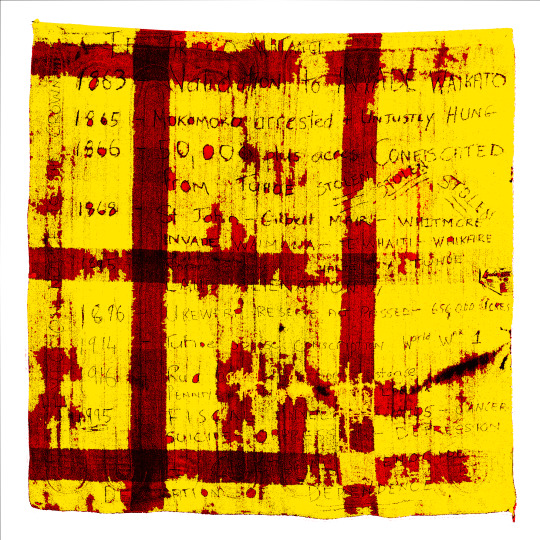
For further context, written on the blanket was a timeline of crown inaction and breach of treaty conditions, being an object empowered with histories and community value due to what it represented. It was, quite simply, a taonga, and the mana of this taonga was not handled respectfully, in a crown action equivalent to taping a child’s drawing on the fridge and moving on. Understandably so, Iti sent the crown an invoice for the blanket.
RESPONSE
Week five’s response is an outlier in format, but the opposite in relevancy. Kaihono Āhua - Vision Mixer: Revisioning Contemporary New Zealand Art by contributors Anna-Marie White and Kate Brettkelly-Chalmers is the topical culmination of all our teachings, research, and discussion, being of the visual culture in and around the place of Māori in post-colonial New Zealand society.
The autonomy of Māori in manoeuvring an imposed colonised way of existence has always been limited. But beyond the common discussions of direct eviction and confiscation, limited opportunities, and disproportionate arrests; lies a visual colonisation that has driven European perception, swayed local opinion, and boxed Māori culture into a crafted ideal.
Citing the controversy surrounding the works of Charles F. Goldie, a Pākehā, late 19th century artist who used realism to capture the portraits of (mainly elderly) Māori subjects; we see specific art collection made to preserve what was see as a ‘dying race’. Goldie’s adherence to the depictions of older nobility, with figures posed in wise gravitas, created a crafted air of ‘wisdom’ to his works, being a visual extension of the ‘noble savage’ label that followed Māori throughout the century. (“Biography of Charles Frederick Goldie”) On the visual side of things, a mind was already made up as to the manner of the lives of Māori. Visual associations of savagery in paintings, stamps and postcards created a stereotyped, hopeless signifier in the eyes of the unfamiliar.
With a treaty abused and colonial culture now successfully implemented, further development of Māori art in this environment would be considered ‘derivative’ as to the cultural phenomena brought over from Europe. Pākehā art in New Zealand developed around this time too, with a sufficient amount of borrowed indigenous visual material to ground their works to their geography. And whereas Māori art would redefine in the modern era through a societal response funnelled through the cultural whakapapa of tradition; Pākehā artists would face a societal difficulty of their own, acknowledging a turbulence of finding a defined idea of what being a ‘native Pākehā’ - or just plain New Zealander – meant through art.
Low and behold, such progresses eventually came from the separation of coloniser from colonial culture, and then a separation of colonial spirit from artistic impulse. These came gradually, through redefinitions in the art world and visual counterculture, a process of rebelling against an essentialist, visual stasis of an entire native population within one’s own country. In order was an acknowledgment of the - “…indivisible relationship of Māori art and culture…” through an informed usage – not fuelled by vacuous cultural curiosity, but of rehearsed inspiration. It was a realised cultural obligation of communication and collaboration. (White and Brettkelly-Chalmers 31)
As a Pākehā artist myself, I too must take these steps in the making process, be it in the appreciation and proper handling of any taonga I may come across, or any domestic subjects that may be the focus of my works. To condense the entire past six weeks of study, as long as I’m existing on this landmass, it’s worth a shot to be chill with the others that share it, wouldn’t you agree?
REFLECTION
In these past six weeks, there’s been a remarkable amount of complex, thoughtful and just plain interesting matter thrown my way. Most interesting especially was the newfound capacity to deconstruct everyday interactions through Semiotics! Being able to separate the signifier from the signified with every visual media I could come across was remarkably useful from there on out, especially given how my focus for this semester’s Fine Arts Studio classes has been in a very similar vein. These similarities allowed easy transfer of information between my understandings in both classes, with the research from one bolstering the other. A kind of subject-based symbiosis. All things considered, I was able to learn about a variety of different artistic perspectives into modern visual culture, so it’s safe to say I’ve quite appreciated where this course has led me so far.
Where issues arose throughout the first half of this module have been through the study process itself. A disproportionate amount of effort placed in the first two weeks of work threw me spectacularly off-course, only being able to finish up Week 2’s nearly-3000 words of writing an entire month following the class. I recognise exactly where these slip-ups came from, too – a general eagerness to express as much knowledge on a subject as possible in writing, with all the key words, bells and whistles is a good philosophy on paper (interesting choice of pun but I digress), but in action, proves to leave me barking up the wrong tree. While I won’t deny the effort I put into this module so far - I have lost plenty of sleep and will likely develop arthritis an entire decade earlier at this rate – I acknowledge that things will have to change in the second half of this semester. Here’s to being more concise!
Returning to the positives, the most valuable to my learning in this module as of now has been the opportunity to put more though into seeing than I would’ve guessed. I’ve always been detail-oriented, but the kind of poststructuralist, looking-everywhere-but-the-canvas sort of thinking has been a game changer, all things considered. This is especially important during the formative stages of the year. The associations of what we see with what we think follow us, as artists, wherever we go, and I’m more than excited to see where it takes me next.
On the topic of next steps, there’s still a couple unchecked boxes as to where I want to take my studies in this course following the break. I’ve been obsessed with unravelling the ‘objective’ kitsch, and am eager to understand what, in abstract, makes something kitsch and where that separates from what is considered “art”. Guess we’ll see where that takes me.
WORKS CITED
“Biography of Charles Frederick Goldie.” Museum of New Zealand Te Papa Tongarewa, https://collections.tepapa.govt.nz/topic/945.
Iti, Tame (Tūhoe). “Mana: The power of knowing who you are”. YouTube, uploaded by TedxAuckland, 17 July 2015, https://youtu.be/qeK3SkxrZRI
White, Anna-Marie, and Kate Brettkelly-Chalmers. Kaihono Āhua - Vision Mixer: Revisioning Contemporary New Zealand Art. The Suter Art Gallery Te Aratoi o Whakatū, 2014.
0 notes
Text
CREATIVE CULTURES & CONTEXTS 237230 ⋆ WEEK 4 ⋆ Looking Back, Looking Now
This week’s study marked a return to the subject of Mana Taonga, being structured as the focus for weeks four and five. The surrounding aspects of how art is handled, viewed, and valued can just as, if not more important than the art itself. What this context can mean is vastly different when comparing works originating from Māori or Pākehā culture.

In this week’s class discussions, the term of the day would be Comparative Histories – these being the parallel currents of Māori or Pākehā culture, and the exchange of ideas that follow. We share this landmass, so we might as well appreciate the works that we make. The histories that go behind artworks warrant mutual respect – considering that mana does not solely apply to Māori - with these values being the core driver behind Te Papa’s Mana Taonga principle. The function of a museum in a multicultural nation is clear – it is a structure that must preserve, shelter and respect; a role displaying the properties of Kaitiakitanga – guardianship.
It is through these responsibilities that Te Papa adopted Mana Taonga into its driving philosophy. It functions - “…to raise awareness of Māori representation within museum practice at Te Papa. There are certain words embedded in this policy which connect to Te Papa’s bicultural partnership.” (Eria) And as artists, our cultural responsibility as citizens of Aotearoa is to respect and work as one in this system.
For this week’s creative project, we were tasked with documenting and expressing the value and mana of our own personal taonga, engaging with its properties through our art.
Through photography, I chose to capture the value of my Toki Necklace.
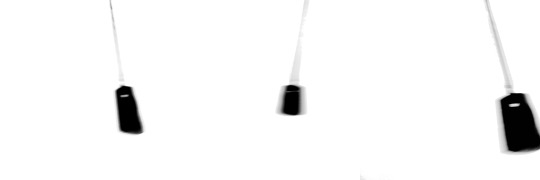
Given to me by my parents on my 14th birthday in 2017, this pendant was told to signify strength, and that wearing it would empower my spirit; and as tough times came and went, I took this to heart.
I rarely wore it for the first half of that year, but as life threw curveballs here and there, it gradually became a part of me; and I rarely took it off ever since. Accompanying me through some of the most bracing years of my life, I’ve always made sure to keep it near, be it touching skin or sitting on the front of my chest for all to see.
Its personal importance was made clear when I left it on the beach one day after taking it off for swimming. That night, my chest felt bare, and I was compelled to go back to that beach in the dead of night, if it meant I would be able to get it back. It’s appeared in self-portraits, in photographs and in the memories of both me and others, no different from any other bodily feature such as a nose or mouth.

And yet, I know little of its origin. My mum said it was hand-crafted by a Māori artisan – and given its properties as a birthday gift I would hope so – but aside from its empowering qualities of strength and mana (which I know from anecdote alone), my understanding between the cultural connection between the circumstances and histories that went into it and its place on my pākehā skin is limited, to say the least. But I can’t say I’m not scared to find out, either.
Over the years, this object has accumulated a connection to my being, and I recall a plot point that features in Episode 9, Season 4 of adult animated show Bojack Horseman; where the character Princess Carolyn finds solace in difficult times with her golden necklace, a priceless family heirloom. When it breaks, she goes to the jeweller to get it fixed, only to find it to be a cheap metal necklace from the 1960s (Ruthie). I fear any assumption of intrinsic value to be shattered were I to discover the stories behind my pendant; and while it pains me to leave myself in the dark as to something that should be culturally connecting me, it is a benefit of the doubt that I wish to remain with.
As of now, the whakapapa of this toki necklace starts with me.
To better understand and incorporate the values in and around Mana Taonga to our works, it is important to hammer down a specific definition. Considering all that I have learned from both class and independent work so far, I made the following digital design to convey this understanding.
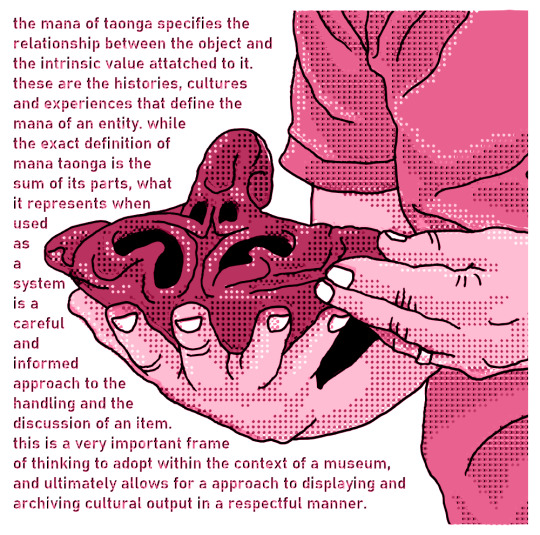
RESPONSE
In the introductory pages to head of Massey’s School of Art - Huhana Smith’s - Mana Taonga and the micro world of intricate research and findings around taonga Māori at the Museum of New Zealand Te Papa Tongarewa, Smith outlines the important values and definitions that go into the concept of Mana Taonga. Mana Taonga as a term is a conjunction of the Te Reo terms Mana – prestige – and Taonga – treasure; otherwise described with the word Mauri – being the ‘essence’ held by an entity. Linguistically speaking, Mana Taonga can be defined by the sum of its parts, being the Mana of Taonga; a specific, treasured item holding the “…values, histories, and associated stories about people or the bearer [that] have accumulated and appreciated over generations and time.” (Smith 8)
When Te Papa adopted Mana Taonga as one of their driving philosophies in 1998 alongside their opening, the meanings surrounding the concept were given a whole new depth, being foundational to the museum’s modern, considered approach to existing as a museum in a multicultural nation. (Schorch and Hakiwai) As Smith put it, there is authority to be found in the whakapapa of an entity; and that Mana Taonga as a system must recognize these culminative properties. Mana exists in everything, and in taonga not exclusive to Māori, warranting the same treatment to valued objects, artworks, writings, and the like, regardless of their geographical origin. It is as if the museum were a guesthouse, the host was represented by Māori cultural practice, and the guests were all the artworks and treasures that were taken in. This analogy, while amusing, does not cover that the inception of Mana Taonga as a foundation to the workings of Te Papa was, as to be expected in a multicultural nation, a collaborative process.
The idea of a museum is a specifically European structure, however the existence of a museum in a colonized nation must come with cultural expectations and responsibilities that it should fulfil. If there is to be any coexistence, then it must follow these principles through a clear and communicated approach. The function of a museum in this case is clear – it is a structure that must preserve, shelter and respect; a role displaying the properties of Kaitiakitanga – guardianship. Regardless of how confidential the museums archives may be, its rhetoric on how this taonga is handled and displayed must be kept in clear glass. And there is no denying it – Te Papa’s continued adherence to the applied system of Mana Taonga for what has been 25 years is as sure a sign of any of the value to which it holds these ideas.
Te Papa’s approach to the Mana of the Taonga that arrives under their care positively affects the relationships between visitors and not just taonga Māori, but Pacific, Asian and international taonga, in an enrichment process that benefits both maker and viewer/user alike amid the exhibitionary complex; an important stage in the gradual restructuring of first nation values through the deconstruction of colonialism’s bitter legacy.
REFLECTION
The last two weeks have been hectic, to say the least. Deadlines in and around this class have left many things in a fixer-upper state, with me going back to patch things up and ship them out on my main working blog. For this week, I have been able to keep things pleasantly concise, at least in comparison with week two’s Herculean word count, which numbered at twice the amount of this week’s count. This week was marked by a return to topic, with the plenty of notes I accumulated in my first week coming in handy. I understood Mana Taonga well enough on the first week, but now it makes total sense, and I’m excited to see how it can be applied to works – both mine and others – in the near future.
WORKS CITED
Eria, Migoto. “The Mana of Taonga and What It Means for Museums in Aotearoa.” Museum of New Zealand Te Papa Tongarewa, Sept. 2018, https://blog.tepapa.govt.nz/2018/09/12/the-mana-of-taonga-and-what-it-means-for-museums-in-aotearoa/?cn-reloaded=1.
Ruthie. Directed by Amy Winfrey, vol. Season 4 Episode 9, Netflix, 2017, https://youtu.be/JKRNKYdvFIo.
Smith, Huhana. “Mana Taonga and the Micro World of Intricate Research and Findings around Taonga Māori at the Museum of New Zealand Te Papa Tongarewa.” Sites: A Journal of Social Anthropology and Cultural Studies, vol. 6, no. 2, Dec. 2009, pp. 7–9, https://sites.otago.ac.nz/Sites/article/view/126.
0 notes
Text
CREATIVE CULTURES & CONTEXTS 237230 ⋆ WEEK 3 ⋆ Isms and Ists Et. al
This week’s class centered on the cultural movements in the world of art and design that have dipped in and out over the past century, with the first activity being, as a group, to develop an understanding of these ‘isms’ as quickly as possible.
Each of the colleagues at my table were to choose something out of the following list:
Indigenous &/or Maori Renaissance/Māori Modernism
Modernism and Modernity
Post Modernism and Postmodernity
Post Structuralism
Post Humanism
Post Feminism
Post Colonialism
I chose Poststructuralism, as I essentially knew nothing about it - making it the perfect topic for the following exercise.
We were given 20 minutes to learn and note as much as we possibly could on our chosen topic, with no regard as to sources, validity, or citations. This would be a surface level understanding gained from surface level research.
I wrote the following based on what I could find in that time.
A further development and contention to structuralism, being the system of cultural patterns/repetitions, poststructuralism disassembles defined order and understanding and opposes a static visual interpretation, which connects it to semiotics. It is also closely tied into postmodernism, itself allowing unwritten voices to define a text.
Poststructuralism is mainly applied to literary theory/textual analysis and involves the reading process where the text is decentralized from its author, placing the power of inquiry with the reader. Perception is everything and intent is futile.
The centerpiece of the following image exemplifies this subjectivity, presenting a fancy cake to some, and as phallic imagery to another.

Vivi Bach. ORF, n.d.
Linearity in a source is rejected. The purpose of the text is entirely malleable, subject to interpretation and redefinition by each individual reader.
To achieve this understanding, I typed in “poststructuralism” on google images and let the search engine take it from there, spending the rest of the 20 minutes scrolling, reading, and saving what I found.
These were definitions we shaped from the accessible and low hanging, and in the next logical step, our class then used an Artificial Intelligence to generate a definition of our chosen topic. Chat GPT, a generalized, text-based engine, was utilized; and all I had to do was type a question to see a detailed answer materialize in front of me. My query: “Define post-structuralism, with related sources.” This is what the AI responded with:

Chat GPT features wide list of complex capabilities, its comprehension accelerating to the point where Massey University itself has put systems in place to prevent students from handing in AI-generated texts. From the results seen when asked to provide a cited definition on poststructuralism, it is deadly effective, and somewhat demoralizing. There is no denying the convenience that the introduction of such systems into the public sphere propose, but with these massive leaps in technology come an accompanying ethical unease.
Following this exercise, we continued our class by watching a student panel -filmed just a week before - from Sydney University on the ramifications of the use of ChatGPT in their studies. In the recording, there were four points raised that caught my interest.
One student brought up the very important benefit of efficiency, especially regarding the process of finding sources for one’s writing. Chat GPT makes the searching process much easier as it can quickly curate related sources at a whim, saving time from what would otherwise be a prolonged aspect of the study process. The time saved from this can then be used elsewhere - “…we can really use that time in our actual thinking and our actual learning...” (15:39-16:29)
For those close to graduation, there are rising fears that the services offered by ChatGPT may keep them out of entry level jobs, especially in the fields of software engineering and coding. As well as these fears of job divides, the same student also mentions how, in recognizing the costs that go behind running the ChatGPT software. The fears are that “…some people will have access to it and other might miss out, and it’s an advantage…” (18:08-19:04)
In what could be considered a summary of the whole ordeal, another student put it bluntly - “…it’s not going away, you can’t take it down, it’s not going to stop being a part of our lives…”. ChatGPT, with all its bells, whistles, and revolutionary features, is just going to have to be something we’ll have to deal with from here on out. (22:05-22:18)
Massey themselves are not banning ChatGPT but acknowledge this is new and rapidly developing technology and that it should follow citation rules. Quite simply, if you source anything from ChatGPT - or any AI for that matter - then you’d better make it clear.
As a conclusive exercise, the following is an evaluation of four different types of online sources, and their respective validity.

The next phase of this week’s studies saw us ‘curating’ a little something of our own; being a museum ‘catalogue’ featuring a selection of art that exemplifies our chosen topic, along with being an opportunity to flex one’s design muscle. I chose four varied artistic examples for this work, being Gary Larson’s infamous “Cow tools”, an AI generated photo from 2019, a commercial pin art-wall, and as a local example, the antique rock art found at Maerewhenua. All these examples share the commonality of a removal from constructed meaning, leaving discussions to be made solely with the viewers – intentional or not.

RESPONSE
Like it or not, the newest era of digital technology has brought with it a redefinition of how we source our information from here onwards. With notions of vast swathes of knowledge available at one’s fingertips now old news, the next logical step in an ever-upward motion of the resources at our disposal sees them curate the information for us with no independent intention other than to provide what we ask for, immediately. This goes beyond the functions of search engines, these resources now collect themselves, write, conclude, and cite themselves – it is a level of convenience so suddenly apparent that it warrants restrictions in academic situations. ChatGPT, now in its fourth iteration, promises to deliver on more functionality than ever before, in a continuously accelerating growth that has contributed to a common – and justified – sour taste in the mouths of those here to witness it.
In what can only be considered plain irony, a machine designed to efficiently solve queries has generated more questions than answers. In the academic sphere – with Massey University being an anecdotal example of this – measures have been put in place to both detect and single out unwarranted usage of generative AI services as a means of cheating. Further ethical consequences are looming over the job market, with numerous office roles at imminent risk of total replacement. Indeed, we are facing the reality that modern world’s tight reliance on structure amid all its facets is a defined, predictable for society that a computer can – and will – fully grasp.
Given its philosophical opposition against the calculated and solid, I wondered as to the present-day applications of the likes of Poststructuralism, a system developed decades before the household adoption of computer technology. By inception (avoiding the term ‘design’) however, Poststructuralism does not adhere to a specific time-period, and easily covers phenomena of past, present and future. What once could describe a natural world only interpreted and made sense of by us, now describes what may very well be a counter-thought to the structure of the urban and digital.
As a philosophy, poststructuralism reads very similar to postmodernism, with both relishing in the uncertainty of what we see, and with the observation of everything but the canvas. In art, we see these ideas appear in the depiction of the unseen, the implied centerpiece, a natural process of the audience finding meaning in the meaningless. The short period of research, skimmed from the very surface of the internet’s archives on the subject, has brought me these skeletal understandings of something complex enough to warrant 60 years of continuous philosophical discussion. The motions of relation between these glances at poststructuralism and the surrounding discourse on sources have been cyclical, and the resulting conclusions – inconsequential. It can be easy to see the postmodern and poststructural alike as frivolous, merely existing to counter what is with what is not. But it is along these lines that the respective value shines through – especially in artistic context – with allowing one to look beyond what is set in stone, and layer critique in a manner that may redefine, recontextualize and further appreciation of the visual world through the un-visual.
REFLECTION

Putting aside my somewhat sensationalized depiction of my experience with this week’s subjects, looking into Poststructuralism was a rewarding venture. While there has always been a general expectation to leave room for interpretation in one’s work, especially with my studies so far at Massey University, to have a specific philosophy to explain and unravel these actions is quite helpful.
That aside, I also enjoyed being able to design a catalogue, especially with the whole aspect of formatting and finding images – it’s quite therapeutic. The discussions on ChatGPT that were brought up did leave me a little shaken however; times are uncertain for many professions – including mine – and there is little we can do except go with the flow.
WORKS CITED
Artbreeder, 2019.
Blundell, Sally, and Rob Brown. “Set in Stone.” Living World, New Zealand Geographic, May 2010, https://www.nzgeo.com/stories/set-in-stone/.
ChatGPT, 2023.
Larson, Gary. Cow tools. Print, Oct. 1982.
McCarter, Reid. “Abandon All Hope and Gaze upon This Deeply Cursed Image of Unidentifiable Objects.” The A.V. Club, Apr. 2019, https://www.avclub.com/abandon-all-hope-and-gaze-upon-this-deeply-cursed-image-1834239839.
Pin Art Wall. Partyworks, n.d.
Rauwerda, Annie. “Why Does Gen Z Love ‘Cow Tools,’ a Nonsensical Comic from 1982?” Inverse, Input, Jan. 2022, https://www.inverse.com/input/culture/cow-tools-far-side-gary-larson-cult-gen-z.
Student-Staff Forum on Generative Artificial Intelligence at Sydney. Directed by University of Sydney, Educational Innovation, 2023, https://www.youtube.com/watch?v=5b8Op64v7Pc&ab_channel=EducationalInnovation.
Williams, James. Understanding Poststructuralism. Acumen Pub, 2005.
0 notes
Text
CREATIVE CULTURES & CONTEXTS 237230 ⋆ WEEK 2 ⋆ Visual Thinking in Dangerous Times
This week’s class began with us checking out the first 30 minutes of Visual Thinking in Dangerous Times, a lecture on the trends of visual culture and its contemporary (and future) implications by Nicholas Mirzoeff, being the same mind behind last week’s text of choice.
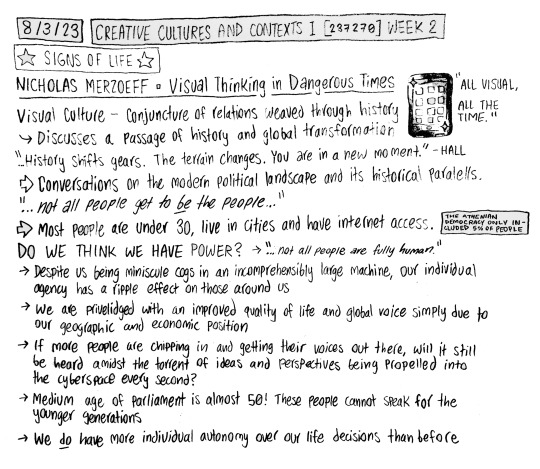
100 years ago, 2% of Brazilians lived in cities. As of 2019, that number has moved to 86%. More of us live in cities, and these cities are larger. Whereas transport meets traffic, ideas keep moving forward; and it is the networks of the intangible that provide unity and escape. But if seeing really is believing, could these really be imagined communities? The ramping motion of urbanization trends follows the same patterns, unsurprisingly, as a decent chunk of global statistics: The population, the life expectancy, technological advancement and access, the temperature. The clutter.
The more clutter we create, the more we must create to break through the clutter. While this statement refers to the snowballing mass advertising that fills urban spaces, this also serves to describe contemporary visual culture. By simple virtue of an eight billion-strong global population and a constant societal push towards the visual, what we have accumulated is nothing short of saturated. Wars are fought through visuality. The tools once exclusive to the upper strategists (maps and later, satellite imagery) is now available to anyone in or out of the army; and yet modern drone cameras still display a low resolution, low frame-rate film more akin to a blurred slideshow than anything lifelike – and yet this is the intention; a basic functionality without the added detail to distinguish humanity from target. It is desensitized, and it is effective.
On social media, the designs behind the interface and ‘trending’ algorithms provide users with enough spoon-fed recommendations to peak interest, and enough interaction to keep them engaged. For the user, it is a free system that provides an easy exchange of visual commodity and micro-dosed dopamine; for those in charge of these online systems however, the user is the commodity, wherein there is a monetization of bodily responses to visual stimuli. No matter how you slice it, excitation, laughter, frustration, and arousal get clicks. Considering this, Mirzoeff brings up Paul B Preciado, who best describes these processes in his book Testo Junkie as the “pharmaco-pornographic”, or the “pornification of everything.” These are the temporary emotions fueled by visual stimuli; motivating sudden, automatic action in response – a mental overpass from the seeing, straight to the doing; a “visual unthinking.” (Mirzoeff 26:57)
For our independent study, we were provided with the first chapter of Marita Sturken and Lisa Cartwright’s Practices of Looking: An Introduction to Visual Culture. In this chapter, titled Images, Power, and Politics, the process of seeing is deeply woven with judgement – how societies run, how people think, feel and purchase; the image conducts these motions, and the motions conduct the image. Arthur Fellig, known more commonly as Weegee, is brought up in the first few pages, being a mid-century photographer famed for his raw visual documentation of murder scenes, capturing public reaction and shock in emotive, voyeuristic depiction. These are moments, for the most part, captured in complete absence of composition – what we see is inflammatory, sometimes brutal. Along the lines of this, the famous photographs of Emmet Till’s open casket funeral are also brought up, holding nothing to the imagination as to the circumstances that left the boy in such a state. Visuals such as these ignite emotions in the viewer, and can be catalysts to direct action from the viewers. The displays are shared with intention, and the shock is shared with all those who see it; responses that the likes of propaganda attempt to emulate, separating the components of human reaction down to their precise elements.
As part of my further reading into the first chapter of Sturken and Cartwright’s text, I chose to look into pages 26-33, which lay down the meanings of Semiotics; the deconstruction of signage and the very elements that compose, in abstraction, the creation of signs. These elements are the context, symbol, and viewer interpretation; otherwise conveyed as the sign, conceptually divided into the interplay between the signifier and the signified, as explained by this nifty little diagram:

San Diego AMA, n.d.
In the aforementioned pages of Sturken and Cartwright’s text, the art of signage interplays between the immediate visual matter and the learned associations of meaning it is attached to. The human experience of seeing entails an accumulation of these elements of symbology and visual understanding. Brand signage and advertisement culture pursues an immediate reaction within a culture that obligates a second glance.
Our brains must balance this split mental process of interpretation, if we are to properly maneuver in today’s visual culture; to let visual reflex command in situations that require it but retain a notion of doubt and further investigation for literally everything else.
Road signage does not warrant second guesses – the immediate understanding of the many lines, images and driving actions that surround the driver are hammered into muscle memory through training and can be the difference between life and death.
Then we are presented with the likes of a carton of Farmer Brown’s Free-Range eggs.

By all means, this carton displays itself as an ethical alternative to the cage eggs provided by the brand; yet the average customer, with any shred of scrutiny, may recognize this to be a false marketing tactic.
The accumulation of learned visual elements means the consumer takes note of the tinted green packaging – with the abstract association of green being with the natural and eco-friendly – along with the explicit denotation of chickens in a lush, open field, implying that the chickens that produced these eggs live this lifestyle.
Despite all the visual indicators for an ethical product being there, the customer may still recognize the lack of official animal welfare insignia and relative cheaper price in comparison to other free-range options. This lack of confirmation – itself an association with product quality and trust – gives the product a disingenuous appearance, despite the pictorial aspects indicating otherwise. Through semiotics, we can observe that something can have all the makings of one thing but be signified as the other.
This is further explored by the highly satirical works of Yue Minjun, whose 2007 work Butterfly is provided on page 28 – although I instead decided to showcase his 1995 painting Execution, as it more vividly exemplifies the layers to seeing that is explained by semiotics.
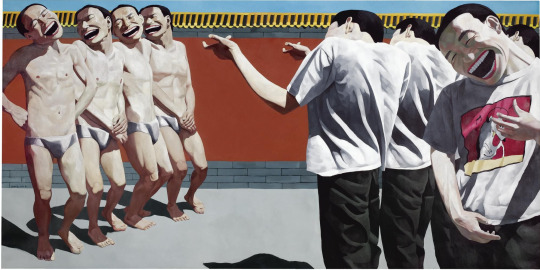
Minjun, Yue. Execution. Oil painting, 1995.
In line with Minjun’s wider artistic portfolio, Execution contains no direct imagery of violence and horror, yet still conveys these concepts, along with a terrifying caricature of contemporary Chinese history, to the viewer. The learned visual signifier of the firing squad, along with the hand gestures of the clothed men on the right implying the bearing of arms functions as a violent action; and when combined with the uncannily wide grins and Chinese architecture adorning the background, the political connotations of the piece shine through. Despite a gallery of smiles, casual clothing and a certain combination of hand gestures, the viewer can immediately see the piece as a possible reference to the Tiananmen Square Massacre of 1989, or as a further parody of Chinese censorship and public image. “…it is the labor of our interpretation that makes the signifier signified relationship fluid and active in the production of signs and meaning.” (Sturken and Cartwright 28)
Statues, burial portraits, mummies, death masks– the closest and most common path we take to a permanence beyond death is through a preservation the visual. Of the ways we have achieved this, photography has proven the most effective at providing the viewer with the clearest depiction of someone who no longer exists. In extension of this, photography has allowed us to confront death to a degree of rawness and convenience that is shockingly accessible, furthermore in the modern age of information.
As a side effect of an upbringing free of commonplace violence and tragedy, the recent popularity of the gore video and online snuff has arisen from a curiosity around death, meshed with the accessibility (and prevalence) of video. People film these deaths, and some make money from their distribution. For the watchers, the ordeal can be grounding, perhaps morbidly fascinating, or just plain shocking. One can experience this at a whim, immediately brought to the eyes by no other want than a passing interest, all sorted and catalogued for consumer convenience. The human response to death has been industrialized.
In this photograph from an unknown source, taken in the mid-to-late 19th century, two parents pose next to their daughter for a family portrait. Given the conditions of a long-exposure photograph, one may notice the blurrier faces of the parents compared to the much more well-defined daughter in the middle. This is because she is dead, but you could probably tell already.
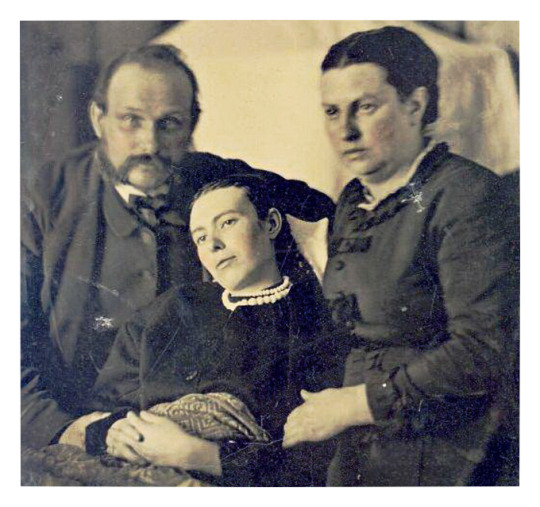
n.d.
Post-mortem photography was a fairly common practice in the 19th century, as the greater cost and formality of having one’s picture taken limited the average person to around two photographs in their lifetime. When a family member died, this would be as good a justification as any for a family to book into the photo booth. This practice soon fell out of favor into the early 20th century, likely due to the ceremony of photography declining with its accessibility; and also, because the photos were terrifying to look at.
Even when the deceased subject was propped up into lifelike pose with their eyelids peeled back, there is an immediate distinction that the viewer can make between what is alive and what is not. It is a subtlety of viewing that runs so finely that it can be hard to pinpoint. Much as the benign layers that compose the deeply parodical and disturbing paintings of Yue Minjun, the visually of what conveys a person as alive is not the sum of its parts.

KL News Network, 2018.
We may point the visual separation between living and dead to the eyes, with the gaze of a cadaver usually cited as resembling a blank stare, in absence of a human ‘glint’ - these being subtle associations that also separate the human from the doll. These recognitions are automatic, stemming from the biological, rather than the learned. A dead body is the source of disease to a community, and to recognize when a person is dead allows for a quicker removal of the body from the population group.

Warsaw University of Technology. MIT Technology Review, 2018.
Alongside recent accelerations in technology have been the widespread adoption of facial recognition technology – and through the addition of machine learning algorithms, an artificial network of visual association has accumulated. An iris scanner software developed in 2018 by a group of researchers at the Warsaw University of Technology uses these learning algorithms to visually identify the dead from the living with stunning 99% accuracy. (Emerging Technology from the arXiv)
The modern culture of signage has reached the point of automation, fed on source material of human responses, and generating an inference motioned towards an ease of process, implying a move away from the humanity of viewing. There is, however, still life beneath it all; conscious minds processing the visual clutter that surrounds, beneath it all. Life made all more poignant in its absence. A particular example of this in art is through Walter Schels’ Life Before Death, a photographic project that captured its subjects in two states – living and dead.
Taking place between 2002 and 2004, and in the form of simple, black, and white portraits, Schels approached individuals in the twilight months of their lives in hospices and deathbeds to provide some final musings on the death that awaited them. Almost all the individuals captured in Life Before Death knew they were going to die, and the homogenized portraiture provided creates a clear postural separation between each two portraits. Closed eyes and tilted heads imply a motionless form, the lives of the living subjects amplified in their absence. Aside from these visual cues, the two states are depicted in identical light, tone, and framing – they could just as well be sleeping – here, death is contextual.

Schels, Walter. Life Before Death. Photography, 2004.
RESPONSE
The visual output of modern times paints a grim – and unfortunately unchanged – view on the process of seeing. Capitalist motives made familiar to the common person only in the past century – of convenience, consumption, and efficiency – are accompanied and driven by the visual. There are, however, layers to this process of seeing; the forays of illustrated fiction, pictorial media, and most recently – AI - have taught us that what you see is not what you get. To use one’s eyes in the modern age entails a fine balance of immediate reaction and second guesses, and it leaves guesses as to how we can make sense of seeing.
A crucial component to this, introduced with this week’s studies, was the topic of Semiotics, being the deconstruction of signage into the defined elements – and subsequent interplay – of the signifier and the signified. Being introduced to this system helped me better identify the moving parts that make up the modern process of seeing – the letters “D-O-G” in succession signify a dog through association of the word with the creature; but furthermore, it demonstrates that something that bears no pictorial resemblance to one thing, can still evoke the clear image of another. With semiotics, we can recognize the layers that go into something so behaviorally simple.
To contextualize this, I brought up the grim example of death, as the visuality of death sticks with us the longest. When in confrontation with photographs of the dead, we slow down, often quietly observe, letting the reflection of it all sit with us. Such reactions are natural; an empathetic pause in excitement, perhaps giving way to a moment of pity, despair, or dread. But what is it exactly that triggers such a guttural reaction in us? Is it the aimless glance, the still body, the pale skin? Much like last week’s discussions on the visuals understood through learning and those read unanimously, the modern visual understanding of death brings forth a specific instance of visual thinking and ‘un-thinking’. The biological aptitude for recognizing death through the eyes alone is still initiated through a screen, understood regardless of whether one has witnessed death in real life, where the lines between the behavioral and the pictorial blur together. Considering this, what is catered media if not an appeal to the biological?
Mirzoeff’s presentation laid many of these aspects out. The industrialized convenience of modern opticality facilitates the administration of law. Mechanized eyes line streets, photographic identification is made of each citizen, arrests and eliminations can be made in seconds. The overwhelming visuality of public process makes the persistence of the invisible more jarring. Invisibility no longer exists as a choice of lifestyle, but as a forced state of being. Those that are ‘invisible’ are still known, just not visually. And what use is that in a world where seeing means everything? Ironically, amid the whirlpools of modern media and it’s permeance into our everyday lives, the average person finds themselves made invisible too. No city on earth can compare to the masses we connect with each time we flick on a screen – we redefine our place in an instant, drowned in feeds of fiber-optic output; an output which follows us, calls us and reads us much as we read it back. At this rate, one might envy the blind.
REFLECTION
As of writing, it’s been an entire month since this week’s tasks were handed out, and suffice to say, I may have gone a little overboard. Time-based hiccups such as these, however, do provide wisdom along with their failings. I’ve found that as soon as I introduce something to my writing, I feel as if I must describe and detail it as much as possible as to convey my understanding. While this habit is in good spirit, it can be easy to get carried away and find myself over 2,500 words deep into what should’ve been a weekly exercise.
This week has, however, provided me with the (very) important concept of Semiotics, which I have enjoyed connecting to the various examples I came across, and has allowed me to flesh out my bibliography at a scale much wider than as of last week. All that’s left is to strike a fine balance between detailed writing and completing work on time!
WORKS CITED
Emerging Technology from the arXiv. “Iris Scanner Can Distinguish Dead Eyeballs from Living Ones.” MIT Technology Review, MIT, July 2018, https://www.technologyreview.com/2018/07/24/141323/iris-scanner-can-distinguish-dead-eyeballs-from-living-ones/.
Minjun, Yue. Execution. Oil painting, 1995.
Mirzoeff , Nicholas. Visual Thinking in Dangerous Times. NYU Prague, Dec. 2019, https://www.youtube.com/watch?v=sBEKGtTgox8.
“Police Seeks Help to Identify Dead Body.” Kashmir Life, KL News Network, Apr. 2018, https://kashmirlife.net/police-seeks-help-to-identify-dead-body-172290/.
Rosenberg, David. “How One Photographer Overcame His Fear of Death by Photographing It.” Slate, Aug. 2014. slate.com, https://slate.com/culture/2014/08/walter-schels-life-before-death-includes-portraits-of-people-before-and-after-dying-photos.html.
Schels, Walter. Life Before Death. Photography, 2004.
Semiotics Diagram. San Diego AMA, https://sdama.org/knowledge/semiotics-in-marketing-research-gaming-changing-marketing-research-3/semiotics-diagram/.
Sturken, Marita, and Lisa Cartwright. Practices of Looking : An Introduction to Visual Culture. 2nd ed, Oxford University Press, 2009.
“Victorian Era Post-Mortem Family Portrait of Parents with their Deceased Daughter.” n.d. https://blog.history.ac.uk/2013/02/memorial-photography/
0 notes
Text
CREATIVE CULTURES & CONTEXTS 237230 ⋆ WEEK 1 ⋆ Signs of Life
Our first class of the semester began with an introduction to the foundations of the course, in no small part attributing to the concept of Mana Taonga, an amalgamation of the Māori concepts of Mana (prestige, wealth of power) and Taonga (treasure). Developed by the Te Papa Museum as a comprehensive term to describe a holistic, culturally inclusive approach to managing the curation of Māori artifacts and histories(Schorch and Hakiwai), Mana Taonga may be better described through the term Mauri, which describes the acute ‘essence’ of being that something may possess.
As we laid out the foundations of the course in class, I derived the following notes from the lectures and subsequent discussion:
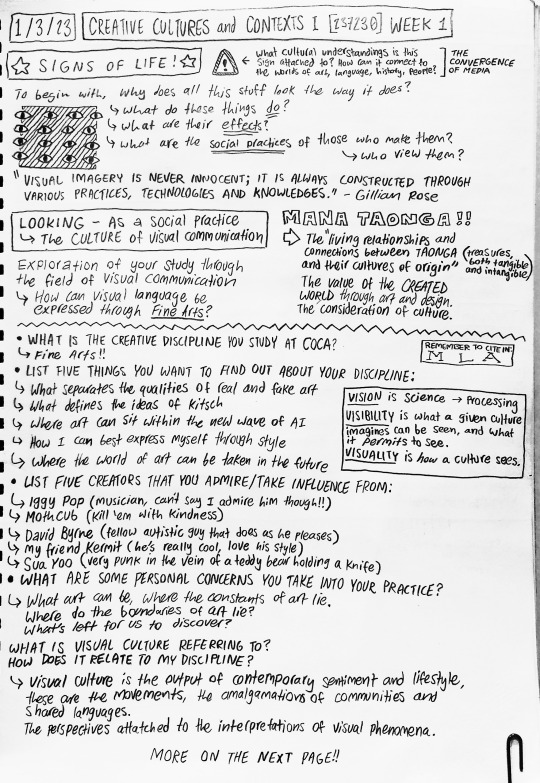

Applied to the focus of our studio module, seeing through the lens Mana Taonga allows for us to deconstruct the process of seeing – and making something to be seen; to elaborate on the relationship between the visual giver and receiver, and the stories that take place within this process.
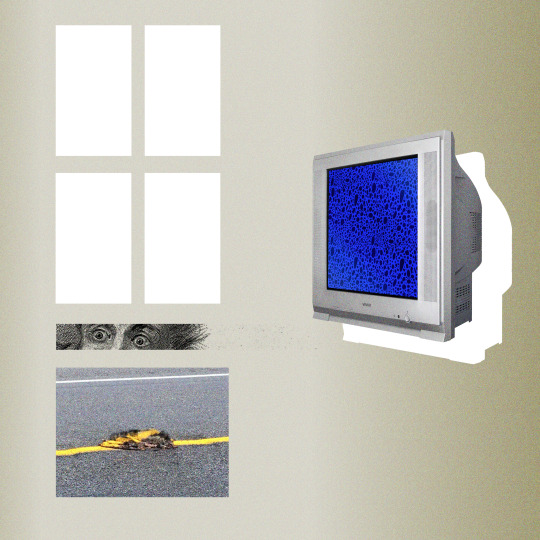
Our first task for this week’s independent study involved taking time to deliberate on how we understand the course title – Signs of Life. I expressed my resulting interpretations in a visual format, choosing to intersplice graphic collages – in an art style known as ‘weirdcore’ - of visual phenomena both universal in understanding, and culturally influenced:
Firstly, I found a photograph of possum roadkill that had been – to some morbid hilarity – painted over during recent roadworks; and I chose this photograph due to exchange of elements both common and human-related. Death, in its most tangible sense, is understood the same amongst witnesses regardless of locality. But the circumstances that brought about this death are intrinsically human. Roadkill is only something that appeared following the popularization of the automobile, and the visual language of road lines adds a further level of cultural exclusivity to the image. While removed from the photograph, what we see results from human influence.
The second visual aspect of this graphic involves another artifact of human influence - the television. To bring intangible representations of both the real and fabricated to the viewer in instantaneous succession is a phenomenon we have grown terrifyingly accustomed to over little more than a century, never minding the fact that these optical experiences can be viewed from an unchanging environment, is an incredible product of human engineering. And yet, in my collage, an element of irony is displayed where the visual content being shown is something viewed across the animal kingdom as a sign of warning – the striking patterns of a poison dart frog.
There is discussion to be made on our developed knack for distinguishing the fabricated, but mainly, I aimed to provide another visual crossroad between the unanimous and the urbanized. This continues with the last two elements of this piece, the first being a cropped lithograph of the human eyes in a state of terror, a language of expression that would as easily be understood 100,000 years ago as it would now; and the next being four white rectangles, which in close proximity to each other, form the visual motif of a window – with this simple representation only being understood by those visually familiarized with it.
Much as seeing the planet viewed as a whole, photographed object greatly influenced the global understanding of those who saw it to a deep, existential length; there are a variety visual concepts that can be unanimously understood – and furthermore –affect the viewer’s place in the world. This is elaborated on Mirzoeff's How to See the World, where the minutia of human existence as seen from NASA’s famous 1972 “Blue Marble” photograph of earth is contrasted with the acceleration of technology and environmental destruction through the passage of time, and yet the immediate impact to the viewer that the photo presents, remains (Mirzoeff 3–4). But in many ways, it’s easier to be ignored, too. The fact that I could start a conversation with someone in Spain (the exact opposite end of the world from New Zealand) at will is a normality of the digital age, as are the advents of globalized trade and the instantaneous exchange of information. We can stop and stare and realize the scale of it all, but it doesn’t change how the world, in our every day, feels smaller.

Apollo 17. AS17-148-22727. 1972.
Convenience has brought its drawbacks – a system designed for speed cuts corners, simplifies – the recent negative wave of public discourse on corporate graphics talks of the ‘soullessness’ that results from creating artworks with the specific motive of being understood by the widest demographic possible, with meticulous attention applied to conveying emotion and brand intent with as little visual clutter as possible.

Grivina. Business Topics - Client Calls Stock Illustration. 2020.
The speed in which visual information disperses in the digital era requires, subsequently, speed of consumption. Those that are raised on internet culture know of the wealth of inter-referential knowledge that is expected, the varieties of subcultures, and it shows through the convenience-oriented behavior that is shown by – and catered for – internet users. We scroll through videos faster (as seen through the advent of short-form content popularized by Vine and TikTok), provide life updates through imagery in rapid succession (Instagram) and say less (Twitter).
Through the shared cultural habits that result from these systems, we see results that, while not universally understood, arrive to the same logical conclusions, demonstrated with the following two examples:
Within online streaming services, live audience input is heavily encouraged, and when you have the likes of a popular streamer engaging with said audience (in this sample being Adin Ross), you see tens of thousands of (mostly teenage) viewers scrambling to get a word in, naturally funneling discussion into less and less words, to the point where many simply prefer to state their opinions by either typing “W” (win) or “L” (lose).

In the online subculture for the Political Compass (a simplified chart that sorts political stances across a colored grid), the internet trend towards convenience has also moved political discussion in that direction. This, combined with a gradual radicalization of the community, has condensed any discourse into a color-coded mudslinging, usually through antagonizing left-wing opinions with strawmen arguments; to the point that users will take something they disagree with and label it as ‘green’ or ‘orange’ (these being the colors associated with left-wing views).


These examples, while amusing, do paint an important picture of online visual culture, and how a constant design motive towards visual fluidity pushes internet discussions into an exchange of iconography, for better or worse.
My topic of study for my studio classes reflects this too, with my focus being of the attention-based culture that forms around the design of YouTube thumbnails; and in the context of the Mirzoeff’s How to See the World, they represent yet another facet of the ongoing upward curve towards.
Keeping the following collage of the contemporary visual landscape on YouTube - which I made for my studio independent study last week - in mind, I took note of three key ideas from this text:

Firstly, comes the point brought up in page 14 that “Seeing is actually a system of sensory feedback from the whole body, not just the eyes.” From nothing more than anecdote, this is crucial to understanding how we see things, especially from the standpoints of art and design. You don’t just see something, you think of it, you register it, and depending on how mentally stimulating it is, your body may assume a particular pose while looking at it. The senses cater to themselves –imagery of food invokes hunger, sex appeal invokes arousal, and the eerie invokes terror.
On page 21 and citing the namesake of Benedict Anderson’s 1983 text Imagined Communities, Mirzoeff reapplies the idea of a fabricated ‘belonging’ to the modern online scene. The perceived camaraderie amongst the united is enough to web together people of differing ideas and backgrounds; the culture of the internet fandom applies national ideas to something considered anything but. Beyond the existence of online parasocial relationships, these are parasocial societies – each complete with respective art, literature, management, and morality. Signs shared amongst themselves, the inside jokes.
The third point is explained on page 26 and connects the death of the working day with the rapid ascension of time-based media modelled around convenience. In a societal environment where work continues even when you get home, do we associate diminishing attention spans with an approaching information singularity or with the work conditions we have applied to ourselves? Are the snapshots and clips of life that we take from our experiences a simulated longevity and delayed opportunity to truly experience the moment at a slower pace?
With our respective notes from How to See the World in mind, my classmates and I were tasked to find and document the signs of life that we could find around us. While I have been encouraged to give further description to the following images, for the most part, we can let the seeing precede it.
Signs of reassurance.
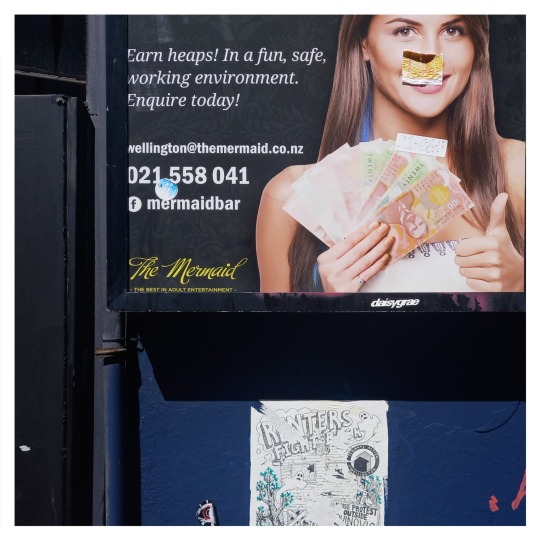
Signs of health.

Signs of pride.

Signs of hijacking.

Signs of alert.

Signs of vanity.
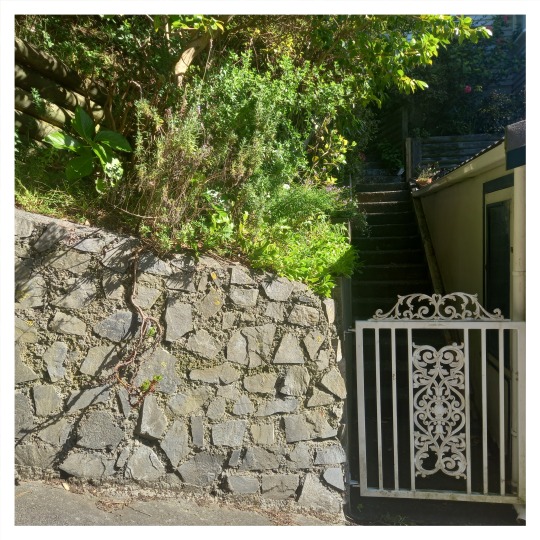
Signs of precaution.
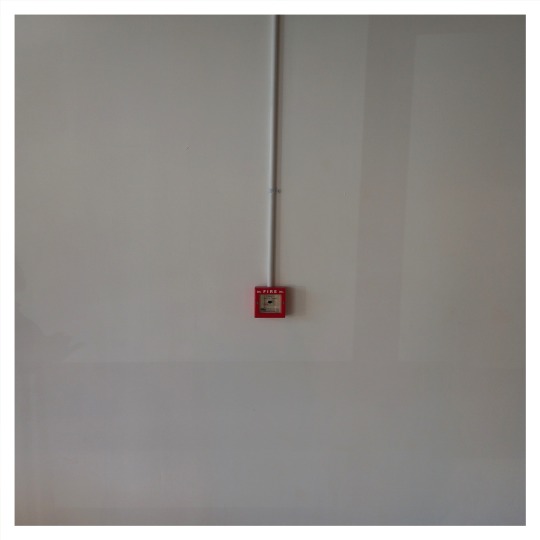
Signs of discourse.
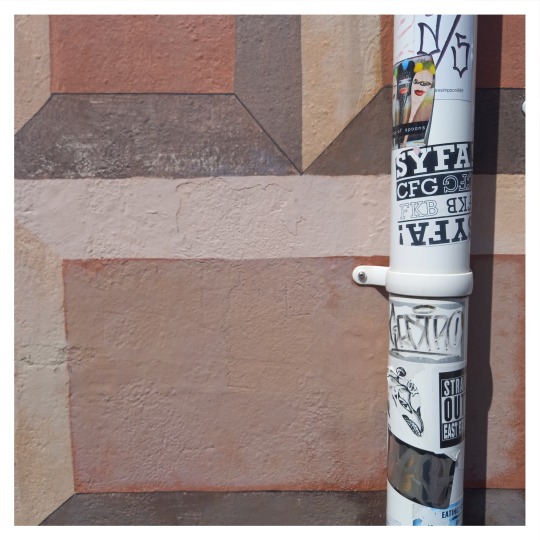
Signs of fidgeting.

Signs of relaxation.

Signs of bygone use.

Signs of voyeurism.

Signs of lust.

Signs of potential

Signs of closure.

Signs of buildup.

Signs of fragility.

Signs of intrigue.
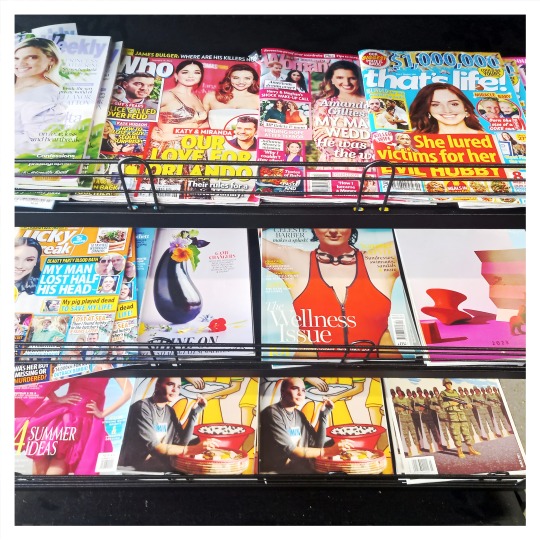
Signs of invitation.

Signs of irony.

Of the 29 images taken overall, there were four in particular I wanted to provide further discussion on, as I feel them to be the most representative of the course namesake. All four were taken along the many attractions of Courtney place, being the visual artifacts of a daily life, perhaps relishing in local understanding, or representing something far more widely understood.
How can we allude to scent through the eyes alone? When it comes to cleaning products, sold on basis of the freshness and cleanliness that they can provide to you and your home – what sells is not just the brightest looking product, but the product that can best indicate the olfactory contents within. There is a design association between straightforward, basic product packaging and a cheap, industrial product. Pastel tinted liquids evoke flowery tones, with adornments of plant life alongside softly rendered brand insignia, providing a cushy enough appearance to almost make you forget that most of these items are very toxic if ingested.

This sign of usage is case of “if you know, you know” applied to a benign object. In a vacuum, a little plastic bag means little – but when found discarded amid a street like Courtney Place, the context changes in something… a little less than legal. These are localized associations, not equal with what may be interpreted in other locations, referring to both the place where the object lies, and the geographic context of the viewer.
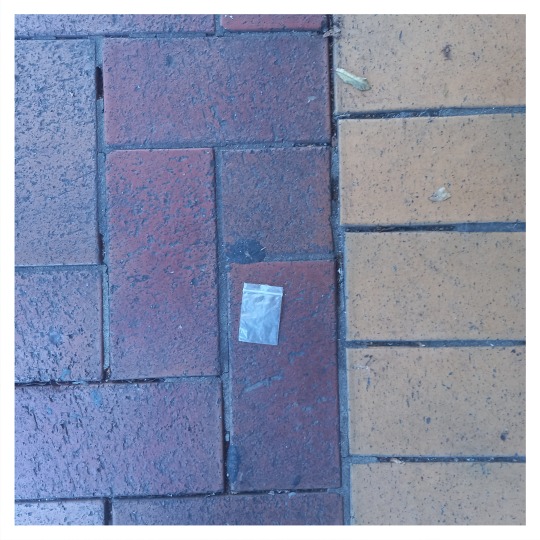
Further building on this localized interpretation of signs in everyday life is a sign that, in most other points in history (and locations) would appear inviting - but in the context I found myself in when taking the photo – was anything but. I found an untouched donut lying on a wrapped blanket sitting near a doorway. The perceived lack of safety on the street brought a layer of suspicion to the contents of the donut, let alone what the potential owner of the donut would do if I was found eating it. Along with the unclean surroundings, it meant an object as benign as a donut immediately became an object of suspicion and disgust, despite how objectively appetizing the exact same donut would appear in a different environment.
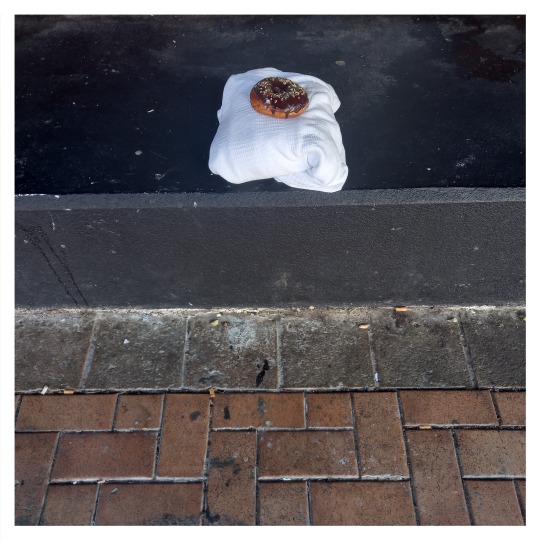
Lastly comes the derivative, yet nonetheless fascinating example of signage: The arrow. While lacking many of the features associated with an arrow, the base form is still there, with the arrow itself being one of the most ancient and commonly understood cultural memes. The arrow is designed to be propelled in a singular direction, a direction that is implied through the inwards motion towards a single point that the arrowhead visually provides, where the eyes may converge there and onwards. And as association begets association, we view the contemporary arrow through a much more abstract lens, less abstractly as a specific ‘thing’, but as a visual cue for the viewer to guide their eyes towards a specific focus. And there are few signs that can hold such a universal honor.
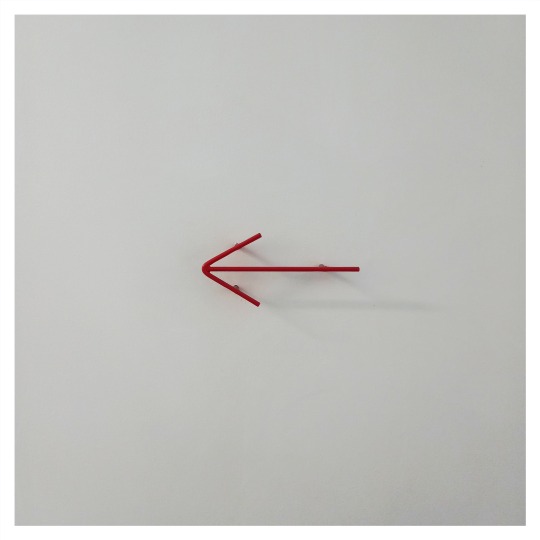
RESPONSE
The creation of visual imagery sees a desire to balance a certain audience reaction curated by the artist; for instance, effective advertising doesn’t just invite an immediate response from the viewer, but it also affects their actions following viewing, perhaps even guiding the viewer’s actions and motivations. Therein lies the nature of signs, functioning as a portrayal of intention, and propagated as a subject of immediate interpretation. A photo of, say, your friend’s holiday to the Cook Islands is a sign, too; as are the many millions of moments that appear online every day; moments that appear to us in enough detail that we can imagine ourselves there and substitute a subpar life with the life of someone else.
A further layer of understanding is applied to the culture in and around signs through the introduction of Mana Taonga – or Mauri - and the connections it illustrates between human and non-human. Much as was applied with discussions of the unanimous and learned elements of visual culture, the designed visual phenomena that we encounter in everyday life balances the intrinsically natural with the abstract; forming a cultural expectation of meanings and double-entendres – a visual osmosis experienced by each of us.
In the vein of the principles of Mana Taonga, every visual object and component we come across has a specific value attached. From anecdote alone, a five-pointed star is seen as inherently more ‘special’ than a circle. There have been associations of prestige, celebration and celestial brilliance attached to the star symbol, and these associations do not form in a vacuum. While the trends towards simplification of media into the refined ‘visual’ in the name of convenience raise a degree of concern, we recognize these as a side effect of there simply being more to take in.
Amid the daily visual traffic, a hierarchy forms of which visual element warrants attention first. Is it the giant letters headlining a newspaper? The appetizing bowl of rice illustrated on the side of a restaurant? The red highlights of a phone notification? It is an accompanying baggage to industrialized urban life that can be daunting once one steps back and takes it all in. And where does the human sit within this baggage? Does the corporeal, unattached person still exist? Or are we now vessels to produce and receive?
The variety of images I took for this week’s studies play on the formalities of modern signage, capturing the mundane, loud, subtle, and complex, and any value conveyed by the visuality of what I photographed could only be understood through the accumulation of numerous associations of value. Despite such emphasis on the design side of this week’s subject, as a Fine Arts student, these conversations are still incredibly important to have. Art, while personally fulfilling through the making process, cannot thrive as art when merely enclosed in one’s own sphere of judgement. The introduction of the ‘other’ into the seeing process allows the art to flourish in new light, and for its own individual completion – independent in the eyes of each who witness it.
REFLECTION
2000 words in and five days overdue, it’s safe to say that for future studies, I could work with saying more with less; both for the sake of being on time with my weekly entries and for the sanity of me and whoever has the misfortune of marking this. Ironic as it may seem, I could throw in a couple sketches and designs to substitute the odd paragraph here and there, it would only make sense. For now, I can take pride in having thoroughly discussed the extent of my knowledge on the topic thus far, and I’m excited to see what the coming weeks will bring for me.
To better represent how this week’s work made me feel, I made this little collage:

WORKS CITED
Apollo 17. AS17-148-22727. Photography, Dec. 1972.
Grivina. Business Topics - Client Calls Stock Illustration. Digital, Dec. 2020, https://www.istockphoto.com/vector/business-topics-client-calls-gm1291576186-386650780.
Mirzoeff, Nicholas. How to See the World. Pelican, 2015. 1-27. https://stream.massey.ac.nz/pluginfile.php/5343965/mod_book/intro/Mirzoeff_How%20to%20see%20the%20world_Intro_Chapter%20notes%202015.pdf?time=1677378163695.
Schorch, Philipp, and Arapata Hakiwai. “Mana Taonga and the Public Sphere: A Dialogue between Indigenous Practice and Western Theory.” International Council of Museums, International Journal of Cultural Studies, 2014, https://icom.museum/en/news/mana-taonga-power-to-the-people/.
0 notes
Text
CREATIVE CULTURES & CONTEXTS 237230 ⋆ Citations of Life
WORKS CITED
Apollo 17. AS17-148-22727. Photography, Dec. 1972.
Artbreeder, 2019.
“Biography of Charles Frederick Goldie.” Museum of New Zealand Te Papa Tongarewa, https://collections.tepapa.govt.nz/topic/945.
Blundell, Sally, and Rob Brown. “Set in Stone.” Living World, New Zealand Geographic, May 2010, https://www.nzgeo.com/stories/set-in-stone/.
ChatGPT, 2023.
Emerging Technology from the arXiv. “Iris Scanner Can Distinguish Dead Eyeballs from Living Ones.” MIT Technology Review, MIT, July 2018, https://www.technologyreview.com/2018/07/24/141323/iris-scanner-can-distinguish-dead-eyeballs-from-living-ones/.
Eria, Migoto. “The Mana of Taonga and What It Means for Museums in Aotearoa.” Museum of New Zealand Te Papa Tongarewa, Sept. 2018, https://blog.tepapa.govt.nz/2018/09/12/the-mana-of-taonga-and-what-it-means-for-museums-in-aotearoa/?cn-reloaded=1.
Grivina. Business Topics - Client Calls Stock Illustration. Digital, Dec. 2020, https://www.istockphoto.com/vector/business-topics-client-calls-gm1291576186-386650780.
Iti, Tame (Tūhoe). “Mana: The power of knowing who you are”. YouTube, uploaded by TedxAuckland, 17 July 2015, https://youtu.be/qeK3SkxrZRI
Larson, Gary. Cow tools. Print, Oct. 1982.
McCarter, Reid. “Abandon All Hope and Gaze upon This Deeply Cursed Image of Unidentifiable Objects.” The A.V. Club, Apr. 2019, https://www.avclub.com/abandon-all-hope-and-gaze-upon-this-deeply-cursed-image-1834239839.
Minjun, Yue. Execution. Oil painting, 1995.
Mirzoeff, Nicholas. How to See the World. Pelican, 2015. 1-27. https://stream.massey.ac.nz/pluginfile.php/5343965/mod_book/intro/Mirzoeff_How%20to%20see%20the%20world_Intro_Chapter%20notes%202015.pdf?time=1677378163695.
Mirzoeff , Nicholas. Visual Thinking in Dangerous Times. NYU Prague, Dec. 2019, https://www.youtube.com/watch?v=sBEKGtTgox8.
Pin Art Wall. Partyworks, n.d.
“Police Seeks Help to Identify Dead Body.” Kashmir Life, KL News Network, Apr. 2018, https://kashmirlife.net/police-seeks-help-to-identify-dead-body-172290/.
Rauwerda, Annie. “Why Does Gen Z Love ‘Cow Tools,’ a Nonsensical Comic from 1982?” Inverse, Input, Jan. 2022, https://www.inverse.com/input/culture/cow-tools-far-side-gary-larson-cult-gen-z.
Rosenberg, David. “How One Photographer Overcame His Fear of Death by Photographing It.” Slate, Aug. 2014. slate.com, https://slate.com/culture/2014/08/walter-schels-life-before-death-includes-portraits-of-people-before-and-after-dying-photos.html.
Ruthie. Directed by Amy Winfrey, vol. Season 4 Episode 9, Netflix, 2017, https://youtu.be/JKRNKYdvFIo.
Schels, Walter. Life Before Death. Photography, 2004.
Schorch, Philipp, and Arapata Hakiwai. “Mana Taonga and the Public Sphere: A Dialogue between Indigenous Practice and Western Theory.” International Council of Museums, International Journal of Cultural Studies, 2014, https://icom.museum/en/news/mana-taonga-power-to-the-people/.
Semiotics Diagram. San Diego AMA, https://sdama.org/knowledge/semiotics-in-marketing-research-gaming-changing-marketing-research-3/semiotics-diagram/.
Smith, Huhana. “Mana Taonga and the Micro World of Intricate Research and Findings around Taonga Māori at the Museum of New Zealand Te Papa Tongarewa.” Sites: A Journal of Social Anthropology and Cultural Studies, vol. 6, no. 2, Dec. 2009, pp. 7–9, https://sites.otago.ac.nz/Sites/article/view/126.
Student-Staff Forum on Generative Artificial Intelligence at Sydney. Directed by University of Sydney, Educational Innovation, 2023, https://www.youtube.com/watch?v=5b8Op64v7Pc&ab_channel=EducationalInnovation.
Sturken, Marita, and Lisa Cartwright. Practices of Looking : An Introduction to Visual Culture. 2nd ed, Oxford University Press, 2009.
“Victorian Era Post-Mortem Family Portrait of Parents with their Deceased Daughter.” n.d. https://blog.history.ac.uk/2013/02/memorial-photography/
White, Anna-Marie, and Kate Brettkelly-Chalmers. Kaihono Āhua - Vision Mixer: Revisioning Contemporary New Zealand Art. The Suter Art Gallery Te Aratoi o Whakatū, 2014.
Williams, James. Understanding Poststructuralism. Acumen Pub, 2005.
BIBLIOGRAPHY
Apollo 17. AS17-148-22727. Photography, Dec. 1972.
Artbreeder, 2019.
“Biography of Charles Frederick Goldie.” Museum of New Zealand Te Papa Tongarewa, https://collections.tepapa.govt.nz/topic/945.
Blundell, Sally, and Rob Brown. “Set in Stone.” Living World, New Zealand Geographic, May 2010, https://www.nzgeo.com/stories/set-in-stone/.
ChatGPT, 2023.
Emerging Technology from the arXiv. “Iris Scanner Can Distinguish Dead Eyeballs from Living Ones.” MIT Technology Review, MIT, July 2018, https://www.technologyreview.com/2018/07/24/141323/iris-scanner-can-distinguish-dead-eyeballs-from-living-ones/.
Eria, Migoto. “The Mana of Taonga and What It Means for Museums in Aotearoa.” Museum of New Zealand Te Papa Tongarewa, Sept. 2018, https://blog.tepapa.govt.nz/2018/09/12/the-mana-of-taonga-and-what-it-means-for-museums-in-aotearoa/?cn-reloaded=1.
Grivina. Business Topics - Client Calls Stock Illustration. Digital, Dec. 2020, https://www.istockphoto.com/vector/business-topics-client-calls-gm1291576186-386650780.
“Interview with Walter Schels.” A Closer Look, Artsper Magazine, Sept. 2013, https://blog.artsper.com/en/a-closer-look/interview-with-walter-schels/.
Iti, Tame (Tūhoe). “Mana: The power of knowing who you are”. YouTube, uploaded by TedxAuckland, 17 July 2015, https://youtu.be/qeK3SkxrZRI
Larson, Gary. Cow tools. Print, Oct. 1982.
McCarter, Reid. “Abandon All Hope and Gaze upon This Deeply Cursed Image of Unidentifiable Objects.” The A.V. Club, Apr. 2019, https://www.avclub.com/abandon-all-hope-and-gaze-upon-this-deeply-cursed-image-1834239839.
Minjun, Yue. Butterfly. Oil painting, 2007.
Minjun, Yue. Execution. Oil painting, 1995.
Mirzoeff, Nicholas. How to See the World. Pelican, 2015. 1-27. https://stream.massey.ac.nz/pluginfile.php/5343965/mod_book/intro/Mirzoeff_How%20to%20see%20the%20world_Intro_Chapter%20notes%202015.pdf?time=1677378163695.
Mirzoeff , Nicholas. Visual Thinking in Dangerous Times. NYU Prague, Dec. 2019, https://www.youtube.com/watch?v=sBEKGtTgox8.
Pin Art Wall. Partyworks, n.d.
“Police Seeks Help to Identify Dead Body.” Kashmir Life, KL News Network, Apr. 2018, https://kashmirlife.net/police-seeks-help-to-identify-dead-body-172290/.
Preciado, Paul B. Testo Junkie: Sex, Drugs, and Biopolitics in the Pharmacopornographic Era. The Feminist Press at the City University of New York, 2013.
Rauwerda, Annie. “Why Does Gen Z Love ‘Cow Tools,’ a Nonsensical Comic from 1982?” Inverse, Input, Jan. 2022, https://www.inverse.com/input/culture/cow-tools-far-side-gary-larson-cult-gen-z.
Rosenberg, David. “How One Photographer Overcame His Fear of Death by Photographing It.” Slate, Aug. 2014. slate.com, https://slate.com/culture/2014/08/walter-schels-life-before-death-includes-portraits-of-people-before-and-after-dying-photos.html.
Ruthie. Directed by Amy Winfrey, vol. Season 4 Episode 9, Netflix, 2017, https://youtu.be/JKRNKYdvFIo.
Schels, Walter. Life Before Death. Photography, 2004.
Schorch, Philipp, and Arapata Hakiwai. “Mana Taonga and the Public Sphere: A Dialogue between Indigenous Practice and Western Theory.” International Council of Museums, International Journal of Cultural Studies, 2014, https://icom.museum/en/news/mana-taonga-power-to-the-people/.
Semiotics Diagram. San Diego AMA, https://sdama.org/knowledge/semiotics-in-marketing-research-gaming-changing-marketing-research-3/semiotics-diagram/.
Smith, Huhana. “Mana Taonga and the Micro World of Intricate Research and Findings around Taonga Māori at the Museum of New Zealand Te Papa Tongarewa.” Sites: A Journal of Social Anthropology and Cultural Studies, vol. 6, no. 2, Dec. 2009, pp. 7–9, https://sites.otago.ac.nz/Sites/article/view/126.
Student-Staff Forum on Generative Artificial Intelligence at Sydney. Directed by University of Sydney, Educational Innovation, 2023, https://www.youtube.com/watch?v=5b8Op64v7Pc&ab_channel=EducationalInnovation.
Sturken, Marita, and Lisa Cartwright. Practices of Looking : An Introduction to Visual Culture. 2nd ed, Oxford University Press, 2009.
“Victorian Era Post-Mortem Family Portrait of Parents with their Deceased Daughter.” n.d. https://blog.history.ac.uk/2013/02/memorial-photography/
White, Anna-Marie, and Kate Brettkelly-Chalmers. Kaihono Āhua - Vision Mixer: Revisioning Contemporary New Zealand Art. The Suter Art Gallery Te Aratoi o Whakatū, 2014.
Williams, James. Understanding Poststructuralism. Acumen Pub, 2005.
0 notes